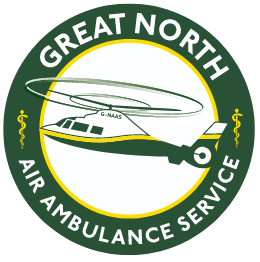At the Great North Air Ambulance Service (GNAAS), pilots are an integral part of the critical care team. After all, no pilot means no helicopter.
Have you ever wondered what it takes to become an air ambulance pilot?
GNAAS currently has six pilots working across the charity’s two bases on their helicopters, the Guardian of the North II and the Pride of Cumbria II, one of those pilots is Nigel Lynch.
Nigel has been a pilot with the charity since February 2021; before that, he had an extensive military career, working worldwide and flying search and rescue helicopters over the North Sea.
So, how did Nigel and all of the organisation’s other pilots do it?
Do you have what it takes to be GNAAS’ next HEMS aviator?
Here, Nigel tells all:
So, how did you become a helicopter pilot?
I joined the Army, and after a year at Sandhurst, I became an officer in the Royal Regiment of Fusiliers. My career in the Army involved many different jobs, including patrolling the streets of Belfast as a platoon commander, doing a pilot’s course, and flying in wet, muddy, cold, and snowy parts of the world, very hot and very sandy ones.
I went back to the Army again, and after a short time at the Infantry Training Centre, training recruits, I returned to the Army Air Corps.
After this, I decided it was time for another move, so I applied to transfer to the Royal Air Force (RAF) – I was accepted. After lots more flying courses, I began flying the Sea King on Search and Rescue in Leconsfield, and after three years there, I moved to RAF Boulmer to do more of the same.
Following this, I headed to the Netherlands to work on search and rescue and transfer of maritime shipping pilots by winch or landing on the ships. After almost six years of working with a fine bunch of people from all over Europe, the pandemic made it too difficult to carry on. So, I headed back home to the North East and, luckily, I am now working on the same helicopter but a different colour.
How do you work your way up to a HEMS pilot?
I would say it’s by gaining much commercial or military helicopter experience in the relevant type of helicopter and operating environment.
Do you need extra qualifications/flying hours/experience to become HEMS?
Yes – definitely.
You need substantial Twin Turbine flying hours and relevant experience in a low-level environment.
This is followed by an extensive line training program to ensure pilots are well-prepared for the challenges they may face while working on an air ambulance.
What are the different pathways to becoming a pilot/learning to fly?
One of the three military branches or self-funded courses are the options available.
Do you need to have any specific physical requirements to become a pilot?
You must be fit enough to pass a Class 1 Civil Aviation Medical Exam.
The medical examination can take up to 4 hours. The examination will include the following:
- Medical history
- Eyesight
- Physical examination
- Electrocardiogram (ECG)
- Lung function test
- Haemoglobin blood test
- Urine test
What is a good starting point for a person looking to start their flying career?
I would say try and gain some experience working in an aviation environment and be as well-read and prepared as possible.
Why did you want to be a pilot?
I’d been awake for about three days, digging a trench on Salisbury Plain with my platoon in the rain.
That’s when two Gazelle and one Lynx Helicopter on the same Army exercise flew down the valley underneath me. The pilots were warm, dry, and getting paid more…enough said.
What did you find the hardest in training?
Learning to fly solely in reference to the aircraft instruments i.e., when flying in cloud or at night. Sometimes this is known as procedural instrument flying or IFR.
Does flying get easier the more experienced you get?
Yes, but you should never become complacent as the environment constantly changes and presents different challenges like mountains and confined urban areas.
Do the learning/training/exams ever stop?
No, we get three checks a year: line training checks, operator proficiency checks, and license proficiency checks.
What would you say is the hardest bit of the job?
The hardest is flying solo in bad weather and at night. Especially when the doctor and paramedic are busy in the back with the patient, and that was my first shift out of training at GNAAS. Also, when the outcome for the patient isn’t successful.
What would you be your best bit of advice or top tips for someone who wanted to become a pilot?
Join the military or get on a company cadet scheme – it is very expensive to learn how to fly.
What options would you suggest taking in school and college/uni?
Maths and physics as options would be useful, and maybe something like aeronautical engineering at University.
Is it a rewarding job?
Yes, it’s a cliché, but being part of a team that can make a difference in people’s lives in a positive way is very rewarding.



